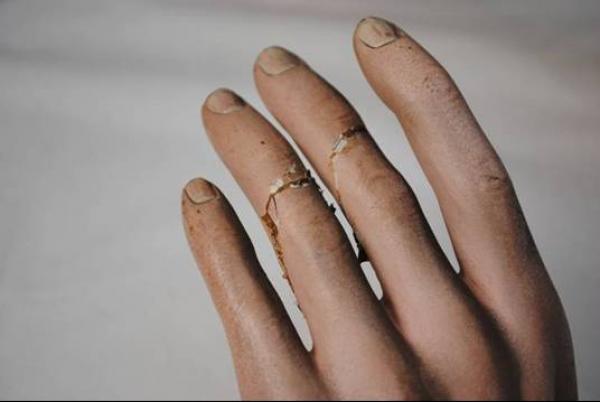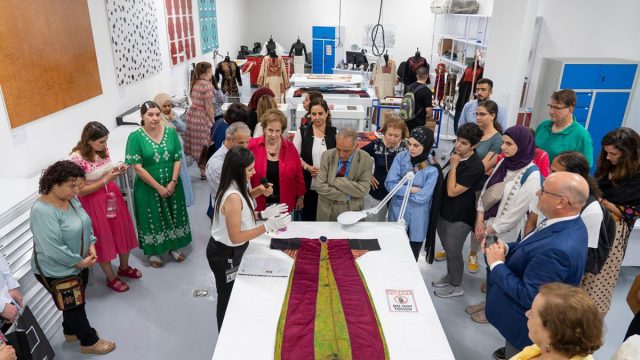The head and arms of the Iki-ningyo were treated by Sofia Marques in sculpture conservation and Richard Mulholland in paper conservation.

It appears that there is a very fine top layer applied to the flesh colour. This is possibly known as ‘nikawa’ and is made of animal glue and fine pigments. It is water soluble. The layer on the face of this living doll seems to have been disturbed, possibly during attempts to clean the surface in the past. Any intervention will disturb this layer, so it was decided not to touch it after all.

Although it would have been desirable to improve the appearance of the surface, given the soluble nature of the top layer it was difficult, if not impossible to correct it without removing it and proceeding with a restoration. The photos show the losses on the nose touched up.


This is the head seen from below. The wooden core and the layers that constitute the decorative scheme of the head can be seen. These two areas were consolidated with Lascaux (50/50 in water) to secure the paint layer that was more unstable and Flugger was used to fill the actual gap seen from below.

The Upper Arms- Richard Mulholland
Layers of Sekishu paper were added dry between the straw core of the upper arms and the top layer of paper. Where there were significant gaps, these were filled with dry bunched and rolled Sekishu so as to provide bulk and allow movement at the joints. Several layers of Sekishu paper were then added using increasingly thick wheat starch paste to consolidate the fills. A final layer of Sekishu was added toned with watercolour. Where the straw and paper core was separated from the wooden forearm, toned paper was also used to re-attach these elements.

On the lower arms, the paint layer was flaking and lifting in places. After carrying out tests for solubility and consolidants, it was found that the top layer (‘nikawa’) gets disturbed (migration of pigments) and stains extremely easily.

Here you can see detailed shots of the flesh polychromy. Although the surface looks very fine at first, under the microscope, one observes that the surface is not at all smooth. The brownish top layer helps to define the low relief elements such as the veins on the arm and gives more naturalism to the flesh.


The excess of shellac used in the past was mechanically removed, and the superficial losses were later filled with Flugger filler. Then Gamblin colours were used to touch up areas of loss. However these were later replaced by acrylic colours since the big molecule size of the medium and pigment proved to be more appropriate when touching up close to the original material which was very absorbent.



Is there anywhere or anyone that is reputable that does restoration work on iki Ningyo?